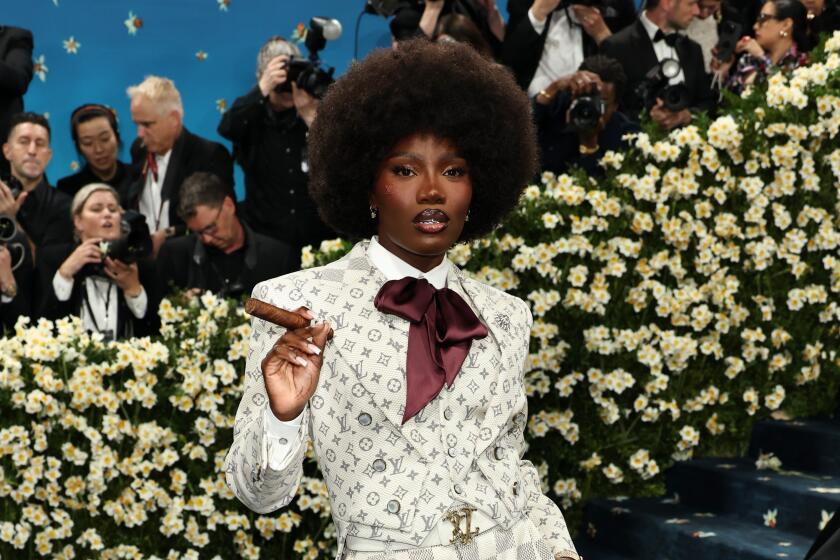Roundup: Jeffrey Deitch’s return, new rules for L.A. skyline, Instagram art

- Share via
How the helipad rule changed Los Angeles architecture and how Middle East strife affected art and architecture. Plus, cadmium paint, the artist effect on gentrification, artist soup from Fukushima ... and the return of Jeffrey Deitch. There’s a lot going on. Here’s a roundup:
— Let’s start with the good news... The L.A. skyline is about to get more interesting. The city has finally gotten rid of the 4-decades-old rule that mandated helicopter pads on any building taller than 75 feet. Bring on the twisting forms and soaring spires!
— Jeffrey Deitch is ba-a-a-aack… in New York. (Whew).
— Now, the not-so-good news. Advances by the Islamic State in Iraq are imperiling archaeological work in Kurdish areas.
— And a photo essay on the old stone houses of Lifta shows how a pre-1948 Palestinian village outside of Jerusalem is being slowly dismantled.
— A work of performance art about slavery, featuring black actors in cages at London’s Barbican Gallery, has been shut down due to protests. (Artnet)
— The European Union is mulling a ban on all paints with the pollutant cadmium in them, a move that may have a profound effect on the way painting looks — and one that is being opposed by some artists. (Artnet)
— Art Basel made a big kerfuffle when it announced it would give publicity to arts-related Kickstarter projects. How’s that going? Um, not so well, reports Artnet’s Eileen Kinsella.
— More art and money thoughts: Jen Graves of the Stranger has a terrific piece about how artists can remain a vital part of gentrifying cities, not just serve as developer bait.
— More reasons to oppose the completion of the 710: it appears that highways are bad for our health.
— Speaking of health: Japanese conceptual artists will offer soup made with vegetables grown in Fukushima at the Frieze Art Fair in London later this month.
— “Is it art? Of course it’s art, though by a well-worn Warholian formula: the subjective objectified and the ephemeral iconized, in forms that appear to insult but actually conserve conventions of fine art.” That’s Peter Schjeldahl of the New Yorker on Richard Prince’s Instagram appropriation paintings.
— Related: Blogger Greg Allen looks into how Prince uses Instagram to create work and why.
— Speaking of social media: How architects play to the form (in ways that aren’t always good for architecture).
— And since we’re on the topic of viral stuff: A team has been animating the scenes on Greek vases to make archaeology more engaging for a younger crowd.
— And because too much tech is never enough: technology theorist Clay Shirky says he no longer allows laptops and tablets in his classroom. “Multi-taskers often think they are like gym rats, bulking up their ability to juggle tasks, when in fact they are like alcoholics, degrading their abilities through over-consumption.” He isn’t the only one. Last year, James Loeffler wrote an interesting piece on why he banned laptops from his classroom.
— Now for something decidedly non-viral: Scholar, ascetic, translator and purveyor of the story of a Virgin birth — there’s an interesting piece in the Paris Review about St. Jerome, the patron saint of librarians.
— On to photography: Ian Teh captures China’s changing natural landscape, which often bears the indelible mark of man.
— A bit on language: Linguist Steven Pinker explains why so much writing is so bad (offering a partial explanation for the nightmares that are art- and architecture-speak). Perhaps, he posits ... er, says ... it has something to do with knowing too much.
— And because we are feeling punkish: A playlist inspired by Destroy All Monsters.
— Last but not least: Your moment of Bob Ross as reimagined by David Mamet.
More to Read
The biggest entertainment stories
Get our big stories about Hollywood, film, television, music, arts, culture and more right in your inbox as soon as they publish.
You may occasionally receive promotional content from the Los Angeles Times.











